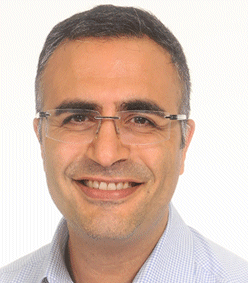
Prior to this, Mr. Rajamand was a consultant at McKinsey & Co where he advised on energy and clean financing matters. His other appointments include Director of the Singapore River ONE project and managerial positions at Unilever Sweden. Mr. Rajamand has also worked with real estate investments.
Mr. Rajamand holds an MBA from the Stanford Graduate School of Management and is a Singapore Certified Energy Manager (SCEM).
Sachi Mulmi (SM), researcher with Frost & Sullivan, had an opportunity to conduct a Movers & Shakers interview with Poyan Rajamand (PR) – CEO of Barghest Building Performance (BBP).
SM: Please describe your product/technology/solution for our readers?
PR: BBP was founded by two university friends passionate about renewable energy and climate change. En-Ping Ong and myself had background in real estate and knowledge in green financing and were looking for ways of combining our knowledge and expertise with our passion. The combination of it all became BBP – a company offering fully funded optimisation of central chiller plants – the largest user of energy in commercial real estate and second largest user of electricity in the industry. Currently, BBP is combining Advanced Analytics and Granular Control of climate control equipment to reduce a buildings energy consumption by up to 20%.
From our incorporation in 2012, we had a vision to build a scalable solution that can have impact regionally. For that, we had to think through our technology offering, go to market strategy and use of IT in international expansion. BBP has now clients in Singapore, Malaysia, Indonesia, Thailand, Taiwan and China.
SM: Which consumer trends do you consider the most relevant for the energy management market and how are you addressing them?
PR: We see two trends currently in the market:
1. Horizontal platforms – Where portfolio owners and suppliers gather information from a number os sources for monitoring and analytic at a central location.
2. Microservices – Where suppliers focus on one area and have fully vertically integrated solution. For example, BBP installs its control solution in existing central chiller plant, have fully vertically integrated data acquisition from sensor to cloud, performs cloud analytics and uses the insights from analytics to improve the control of its solution on site.
I believe that these two trends will converge to drive down cost and create more value for client.
SM: What is the size of the energy management market? Which direction is the industry progressing in?
PR: IEA Energy Efficiency Market report 2016 put the size of additional investment for energy efficiency in HVAC and controls market at 27 Bn globally for building sector alone. The general trend is going from an energy monitoring solution to a solution oriented one – a trend that is fully in-line with BBPs offering. We do not monitor parameters – BBP control solution takes active choices that change operational parameter to save measurable energy for our clients. For me, market sizing is not only about having a large market, but also an effective way of addressing it. BBP has invested heavily in wireless and cloud as part of our customer acquisition. We perform one site evaluation per week where our engineers measure actual parameters on site to estimate the potential impact of our control solution on that specific building.
SM: What are the growth opportunities in this market? How can growth opportunities be capitalized on?
PR: Energy management is encompassing more information than pure energy data which creates an opportunity to move from a pure monitoring solution towards value added services. BBP uses the actual site data to devise and continuously improve the algorithms in its control system which in turn reduces energy consumption of the climate control systems.
Other providers use energy management system data for building services around predictive maintenance, asset reliability and throughput optimisation.
I think the largest growth opportunity is in solutions that can quantify their benefit to the client – a success based pricing.
BBP systematically give the client a fully funded solution – the client has no upfront cost and BBP is paid through a portion of savings achieved.
SM: What do you see as future trends of this industry related to technology, legislation, and customer demands?
PR: Clients will become more demanding on the value created by energy management system which forces providers to think about how to create value through insights that drive actual change. In that the role of analytics and deep understanding of underlying equipment or system will play an ever greater role.
I see IT security as a threat that many solution providers need to address very soon in order to be able to work with customers at scale.
If you have further questions/comments, please contact: [email protected]
For more information on Emerging Companies in the Energy Management Market in Asia-Pacific, please visit:
https://store.frost.com/emerging-companies-in-the-energy-management-market-in-asia-pacific-2017.html



